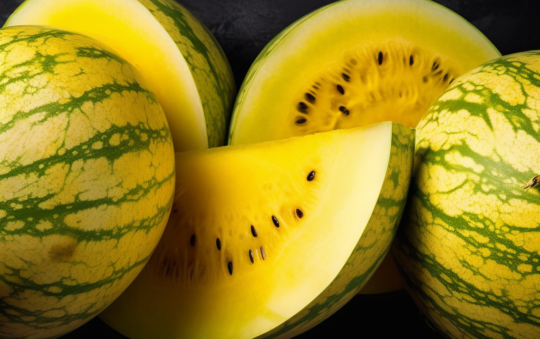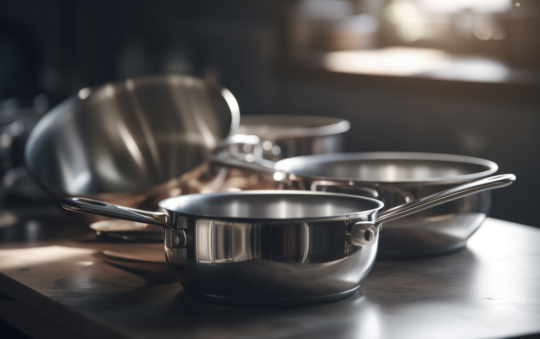Welcome to the world of culinary mastery! Today, we’ll be discussing the
Top 5 Knife Essentials
That every professional chef swears by, ensuring you can cook like a pro in your own kitchen. It’s time to ditch those old, dull knives and upgrade your cutting game to achieve those precise cuts and impressive knife skills.
The secret to a versatile and efficient kitchen lies in having the right tools at your disposal. Among these, knives hold paramount importance. So, say goodbye to those fancy knife sets, and let’s dive into the three essential knives that will cover almost all your cutting needs: a chef’s knife, a serrated bread knife, and a paring knife.
Quality matters, and investing in forged knives is a wise decision, as they ensure durability and performance. But that’s not all! To maintain your knives’ sharpness, it’s crucial to sharpen them regularly, and a user-friendly chantry knife sharpener will do the trick.
Now that you know the basics of knife essentials, it’s time to elevate your cooking skills and become the master chef of your kitchen. Stay tuned for more tips and tricks to help you cook like a pro!
Chef’s Knife: The All-Purpose Knife for Your Kitchen
As a professional chef or a home cook, one of the essential tools in your arsenal should be a high-quality chef’s knife. Not only is it the most versatile knife in your kitchen, but it’s also used for almost every task, from chopping vegetables to slicing meat.
The All-Purpose Knife
A chef’s knife, also known as a cook’s knife or French knife, is an all-purpose kitchen knife with a curved blade that tapers to a point. The blade is typically eight to ten inches long and one and a half to two inches wide. The length of the blade makes it easy to cut through large ingredients, while the width allows for precise chopping and slicing.
A chef’s knife is designed to be used in a rocking motion, allowing you to chop herbs, dice onions, and mince garlic quickly. It’s also perfect for slicing meat and fish, cutting through bones and joints with ease.
High-Quality Forged Knives
When it comes to selecting a chef’s knife, you want to invest in a high-quality forged knife. Forged knives are made from a single piece of steel that has been heated and shaped under extreme pressure. This process creates a stronger and more durable blade that won’t bend or break easily.
A forged knife also has a full tang, which means that the blade extends down through the handle, providing extra stability and balance. The handle of a chef’s knife should be comfortable to grip, with a secure hold that won’t slip when wet.
In conclusion, a chef’s knife is an essential tool for any cook, professional or amateur. Invest in a high-quality forged knife that feels comfortable in your hand and has a razor-sharp blade. With the right knife, you’ll be able to cook like a pro and take your meals to the next level.
Serrated Bread Knife: The Perfect Tool for Bread and Tomatoes
What is a Serrated Bread Knife?
A serrated bread knife is a type of knife with a saw-like edge that allows you to easily slice through bread without compressing it. The serrated teeth grip the bread’s crust and prevent the knife from squishing the soft interior. They also make it an excellent tool for slicing through ripe tomatoes without damaging their delicate flesh.
Serrated vs. Straight-Edged Knives
While straight-edged knives are ideal for cutting through meat and vegetables, they’re not the best option when it comes to slicing bread or tomatoes. A straight blade has a tendency to crush the bread or tomato, making it hard to get a clean slice. A serrated blade, on the other hand, is perfect for these tasks because the teeth of the blade grip the surface and cut cleanly through it without compressing it.
Additional Resources
If you’re interested in learning more about knives, check out these related websites for additional information:
- Epicurious – How to Choose a Knife
- Food Network – Knife Skills
Remember, a serrated bread knife is an essential tool for any chef. It’s perfect for slicing through bread, tomatoes, and other delicate foods without squishing them. So, be sure to add one to your collection of knives if you haven’t done so already.
Cook Like a Pro: Top 5 Knife Essentials Every Chef Swears By
The Precision Tool: Paring Knife
When it comes to precision cutting, nothing beats a paring knife. This small but mighty knife is an essential tool for chefs and home cooks alike. Its pointed tip and sharp blade make it perfect for peeling and trimming fruits and vegetables with ease.
Ideal for Peeling and Trimming
The paring knife is ideal for tasks that require precision and control. It can easily remove the skin from a potato or carrot without taking too much of the flesh with it. Its small size also makes it perfect for trimming and shaping fruits and vegetables, such as removing the eyes from a pineapple or cutting the tops off of strawberries.
When selecting a paring knife, look for one with a comfortable grip and a sharp blade. It should feel balanced in your hand and be easy to control. A high-quality paring knife can last for years with proper care, so it’s worth investing in a good one.
If you’re looking to improve your knife skills in the kitchen, a paring knife is a great place to start. With its precision and versatility, it’s a tool that every chef swears by.
Looking for more information about kitchen knives and their uses? Check out this helpful guide from Epicurious.
Cook Like a Pro: Top 5 Knife Essentials Every Chef Swears By
Knife Sharpener
Keeping your knives sharp is essential in any kitchen. A dull knife can make cooking frustrating and dangerous. That’s why investing in a good knife sharpener is a must-have for any chef, whether you’re a pro or a home cook.
Manual vs. Electric Sharpeners
When it comes to knife sharpeners, there are two main types: manual and electric. Manual sharpeners are handheld and require you to run the blade through the sharpener manually. Electric sharpeners, on the other hand, are powered and can sharpen your knives quickly and easily.
Manual sharpeners are a great choice for those on a budget or who want a more hands-on approach to sharpening their knives. They also tend to be more portable and are a good option if you need to sharpen your knives while on the go. However, they can take some practice to get the hang of and may not be as effective as electric sharpeners.
Electric sharpeners are a convenient choice for those who want to sharpen their knives quickly and easily. They are also more effective at sharpening knives and require less skill or practice to use. However, they tend to be more expensive and less portable than manual sharpeners.
No matter which type of sharpener you choose, it’s important to read the instructions carefully and follow them closely to avoid damaging your knives. It’s also a good idea to have your knives professionally sharpened once or twice a year to keep them in top condition.
- The Spruce Eats has a great list of the best knife sharpeners on the market if you’re in the market for one.
- If you’d like to learn more about how to properly sharpen your knives, check out this video tutorial from Chef’s Choice.
Cutting Board: The Best Material and Size for Your Kitchen
When it comes to preparing meals, having a good cutting board makes all the difference. Not only is it important for maintaining the sharpness of your knives, but it also prevents cross-contamination and ensures that your food is safe to eat. But with so many options out there, how do you choose the right one for your kitchen needs? Let’s take a closer look at the best materials for cutting boards and how to select the right size.
The Best Material for Cutting Boards
As mentioned in the previous section, glass or stone boards might look pretty, but they are not ideal for daily use as they can quickly dull your knives. The two best material options for cutting boards are plastic and wood.
Plastic boards are affordable and easy to clean, making them a popular choice for many home cooks. They are lightweight and come in different colors, which helps to prevent cross-contamination when preparing different types of food. However, plastic boards can develop deep grooves over time, which can harbor bacteria and cause odor.
Wood cutting boards, on the other hand, are more durable and resistant to deep grooves. They are also more aesthetically pleasing and can enhance your kitchen decor. Wooden boards are a bit more expensive than plastic, but they last longer and are less prone to bacteria buildup. Just make sure to oil them regularly to keep them in good condition.
How to Choose the Right Size
The size of your cutting board depends on your specific needs and kitchen space. If you have a small kitchen, you might want to consider a smaller board that can be easily stored away. However, if you have a large kitchen or do a lot of meal prep, a larger board might be more suitable.
A standard size cutting board is around 12×18 inches, which is perfect for most daily cooking needs. However, you can also find smaller boards that are around 8×11 inches or larger boards that are over 20 inches long. Just be sure to choose a size that fits comfortably on your countertop and provides enough space for your cutting needs.
In conclusion, when it comes to selecting a cutting board, choose a material that suits your needs and is easy to clean. Also, choose a size that is suitable for your kitchen space and meal prep requirements. By following these simple tips, you can find the perfect cutting board that will make your time in the kitchen more enjoyable and efficient.
Sources:
Conclusion
In conclusion, having the right set of knives is essential if you want to cook like a pro. Investing in three essential knives: a chef’s knife, a serrated bread knife, and a paring knife, will cover all your cutting needs. Additionally, choosing forged knives over stamped knives is the way to go, as they are higher in quality and last longer. To maintain the longevity of your knives, sharpen them regularly. A chantry knife sharpener is an excellent tool for beginners and gets the job done. Choose a cutting board made of wood or plastic, and replace it every couple of years to avoid bacteria build-up. Lastly, having one non-stick pan is recommended for egg cookery, and Tramontina offers budget-friendly and durable options. Upgrade your kitchen essentials, and you’ll be cooking like a pro in no time!

